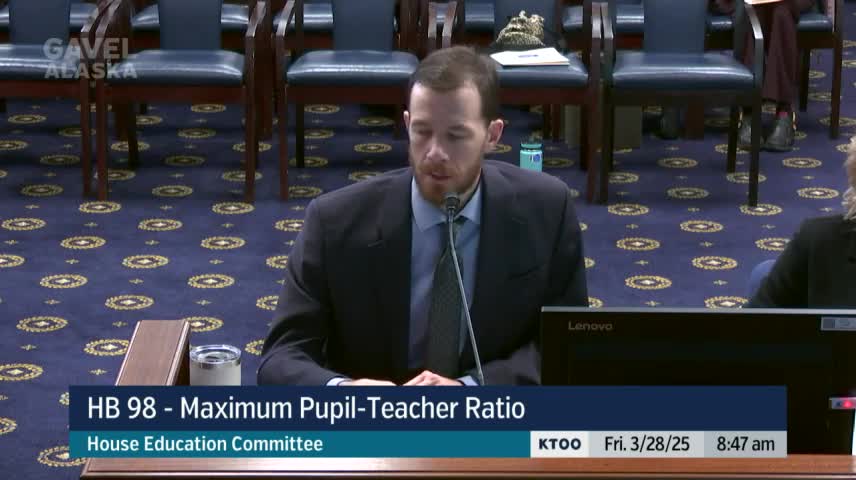Alaska lawmakers discuss bill to limit class sizes in Anchorage schools
March 28, 2025 | 2025 Legislature Alaska, Alaska
This article was created by AI summarizing key points discussed. AI makes mistakes, so for full details and context, please refer to the video of the full meeting. Please report any errors so we can fix them. Report an error »

A proposed bill aimed at addressing class sizes in Anchorage schools has sparked significant discussion among Alaska legislators, highlighting the unique challenges faced by teacher unions in the state. During a recent House Education Committee meeting, lawmakers emphasized the importance of the bill, which seeks to empower the Anchorage School District to negotiate for smaller class sizes—something that has been hindered by a court decision from the 1970s.
Representative Rhett Fields, who introduced the bill, pointed out that while teacher unions in many states have successfully negotiated for lower class sizes, Alaska's unions have been unable to do so due to this legal anomaly. "When you look at large class sizes today in Alaska, just recognize in most other states, teacher unions have driven down class size in bargaining," Fields stated, underscoring the bill's significance.
The discussion also touched on the broader implications of class sizes on student achievement and public perception of school funding. Legislators expressed concerns that without a legislative mandate, resources might not be allocated effectively to prioritize classroom needs. Representative Fields noted, "I think a class size limit will have positive effects on student achievement, but it will also help show voters the money is going into the classroom."
While the bill currently focuses on Anchorage, there is interest in potentially extending similar measures to other large districts in Alaska. However, some lawmakers expressed caution about the state inserting itself into local governance, emphasizing the need for collaboration with local school boards.
As the conversation continues, the bill's proponents hope it will pave the way for improved educational outcomes and greater transparency in how school funding is utilized. The next steps will involve invited testimony and further discussions on the bill's implications for Anchorage and potentially beyond.
Representative Rhett Fields, who introduced the bill, pointed out that while teacher unions in many states have successfully negotiated for lower class sizes, Alaska's unions have been unable to do so due to this legal anomaly. "When you look at large class sizes today in Alaska, just recognize in most other states, teacher unions have driven down class size in bargaining," Fields stated, underscoring the bill's significance.
The discussion also touched on the broader implications of class sizes on student achievement and public perception of school funding. Legislators expressed concerns that without a legislative mandate, resources might not be allocated effectively to prioritize classroom needs. Representative Fields noted, "I think a class size limit will have positive effects on student achievement, but it will also help show voters the money is going into the classroom."
While the bill currently focuses on Anchorage, there is interest in potentially extending similar measures to other large districts in Alaska. However, some lawmakers expressed caution about the state inserting itself into local governance, emphasizing the need for collaboration with local school boards.
As the conversation continues, the bill's proponents hope it will pave the way for improved educational outcomes and greater transparency in how school funding is utilized. The next steps will involve invited testimony and further discussions on the bill's implications for Anchorage and potentially beyond.
View full meeting
This article is based on a recent meeting—watch the full video and explore the complete transcript for deeper insights into the discussion.
View full meeting
